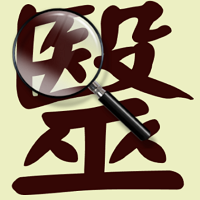作者:黑泽 原文链接:https://www.zhihu.com/question/66635940/answer/244377932
中医诊断一致性很差早有定论了吧,难道整天号称“不了解中医就不能评论中医”的中医粉们竟然不知道?到底是谁不了解还喜欢意淫呢?
还有某中医学渣竟然认为这个研究样本量小所以非一致性不成立,笑死我了。为什么不先回去学学统计学再来瞎bb啊?先搞清楚什么是统计假设和统计检验吧。按这个学渣的逻辑,一个药二期没过,中医粉说这不算,必须要继续做三期大样本失败了,才能证明这个药没用咯?那还做二期干嘛?小样本下非一致性都这么明显,脑残才去做大样本吧。
1. 2004年马里兰大学的研究,3个5年以上行医经验的中医对同样39个类风湿性关节炎病人诊断,互相之间符合率只有25.%~33%, 和蒙的也差不多了。
In a larger study published in 2004, three TCM practitioners examined the same 39 rheumatoid arthritis (RA) patients separately at the University of Maryland General Clinical Research Center. Each patient filled out a questionnaire and underwent a physical examination that included tongue and pulse diagnosis. Then each practitioner provided both a TCM diagnosis and a herbal prescription. Agreement on TCM diagnoses among the 3 pairs of TCM practitioners ranged from 25.6% to 33.3%. The degree to which the herbal prescriptions agreed with textbook recommended practice of each TCM diagnosis ranged from 87.2% to 100%. The study's authors concluded:
The total agreement on TCM diagnosis on RA patients among 3 TCM practitioners was low. When less stringent, but theoretically justifiable, criteria were employed, greater consensus was obtained. . . . The correspondence between the TCM diagnosis and the herbal formula prescribed for that diagnosis was high, although there was little agreement among the 3 practitioners with respect to the herbal formulas prescribed for individual patients [5].
The University of Maryland researchers then repeated the above study using 40 RA patients and three practitioners who had had at least five years of experience. The results were nearly identical to the previous findings [6].
2.另外一个研究,30个中医对十张高清舌苔照片的诊断,如果有80%以上人(即24个中医)同意同一个诊断,则定义为诊断符合,结果符合率低于20%;如果研究人员采用更复杂的选项,符合率只有不到5%。
有些中医粉吵着说这个看照片不算,要望闻问切才行。真是不把全文翻译过来不行啊,累死老子了。这个实验不是让中医看舌头照片诊断病人得了什么病,而是根据舌头照片,给中医两个选项2选1是非题,80%以上中医都选是或者选非,就算一致。问的问题也不超过舌头本身所代表的症,并没有让中医去推断病人得了什么病,懂了吗?
In a "laboratory" study of tongue diagnosis, 30 TCM practitioners wer asked to examine 10 high quality images in each of two sessions. For each omage, if at least 24 (80%) of the practitioners agreed on a diagnosis, the result was considred significant. This occured only 17.3% in the first session and 19.1% in the second session when the practitititioners were given two choices to pick from. But when the choices were more complex, they agreed among themselves less than 5%. The researchers concluded that "TCM tongue inspection for specific characteristics examined was not a reliable diagnostic method, at least for the group of TCM practitioners involved in this study." [8]
具体的可以看下面这篇原文,还讲了点别的东西,就懒得翻译了。
http://www.acuwatch.org/reports/diagnosis.shtml
还有某中医学渣竟然认为这个研究样本量小所以非一致性不成立,笑死我了。为什么不先回去学学统计学再来瞎bb啊?先搞清楚什么是统计假设和统计检验吧。按这个学渣的逻辑,一个药二期没过,中医粉说这不算,必须要继续做三期大样本失败了,才能证明这个药没用咯?那还做二期干嘛?小样本下非一致性都这么明显,脑残才去做大样本吧。
1. 2004年马里兰大学的研究,3个5年以上行医经验的中医对同样39个类风湿性关节炎病人诊断,互相之间符合率只有25.%~33%, 和蒙的也差不多了。
In a larger study published in 2004, three TCM practitioners examined the same 39 rheumatoid arthritis (RA) patients separately at the University of Maryland General Clinical Research Center. Each patient filled out a questionnaire and underwent a physical examination that included tongue and pulse diagnosis. Then each practitioner provided both a TCM diagnosis and a herbal prescription. Agreement on TCM diagnoses among the 3 pairs of TCM practitioners ranged from 25.6% to 33.3%. The degree to which the herbal prescriptions agreed with textbook recommended practice of each TCM diagnosis ranged from 87.2% to 100%. The study's authors concluded:
The total agreement on TCM diagnosis on RA patients among 3 TCM practitioners was low. When less stringent, but theoretically justifiable, criteria were employed, greater consensus was obtained. . . . The correspondence between the TCM diagnosis and the herbal formula prescribed for that diagnosis was high, although there was little agreement among the 3 practitioners with respect to the herbal formulas prescribed for individual patients [5].
The University of Maryland researchers then repeated the above study using 40 RA patients and three practitioners who had had at least five years of experience. The results were nearly identical to the previous findings [6].
2.另外一个研究,30个中医对十张高清舌苔照片的诊断,如果有80%以上人(即24个中医)同意同一个诊断,则定义为诊断符合,结果符合率低于20%;如果研究人员采用更复杂的选项,符合率只有不到5%。
有些中医粉吵着说这个看照片不算,要望闻问切才行。真是不把全文翻译过来不行啊,累死老子了。这个实验不是让中医看舌头照片诊断病人得了什么病,而是根据舌头照片,给中医两个选项2选1是非题,80%以上中医都选是或者选非,就算一致。问的问题也不超过舌头本身所代表的症,并没有让中医去推断病人得了什么病,懂了吗?
In a "laboratory" study of tongue diagnosis, 30 TCM practitioners wer asked to examine 10 high quality images in each of two sessions. For each omage, if at least 24 (80%) of the practitioners agreed on a diagnosis, the result was considred significant. This occured only 17.3% in the first session and 19.1% in the second session when the practitititioners were given two choices to pick from. But when the choices were more complex, they agreed among themselves less than 5%. The researchers concluded that "TCM tongue inspection for specific characteristics examined was not a reliable diagnostic method, at least for the group of TCM practitioners involved in this study." [8]
具体的可以看下面这篇原文,还讲了点别的东西,就懒得翻译了。
http://www.acuwatch.org/reports/diagnosis.shtml
